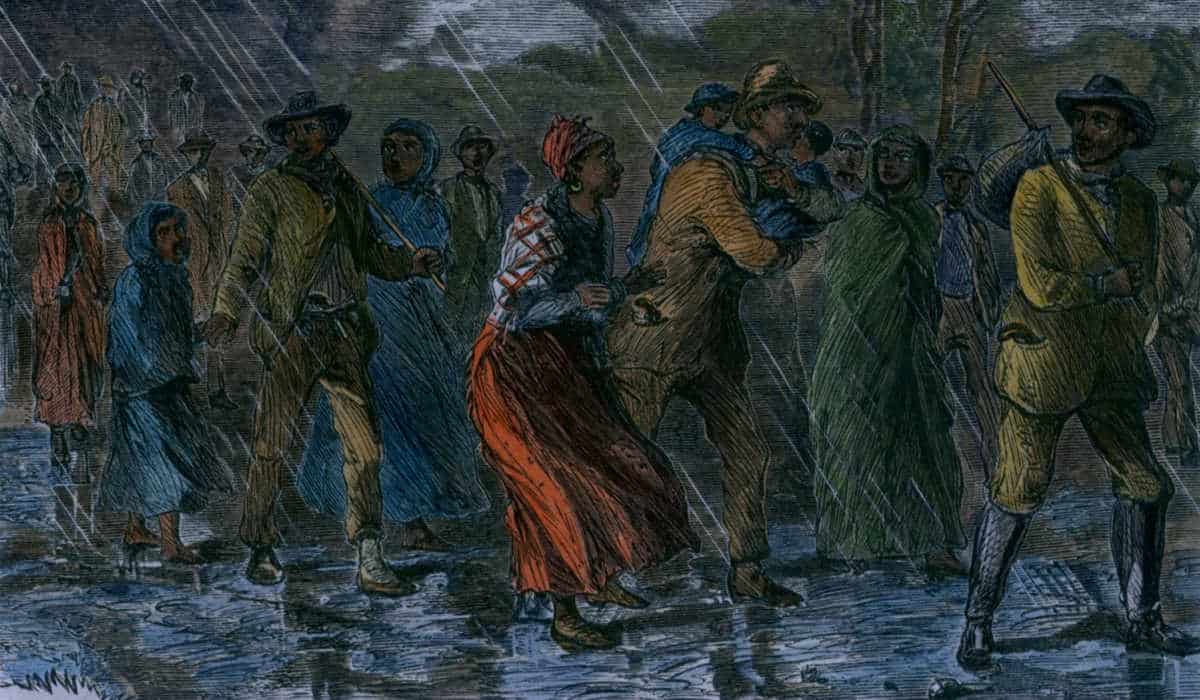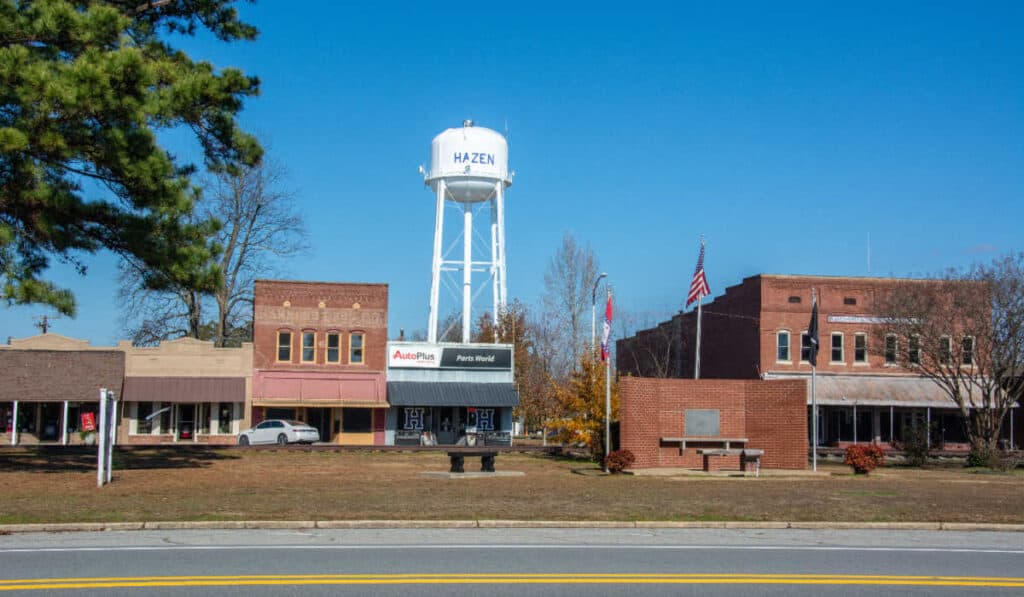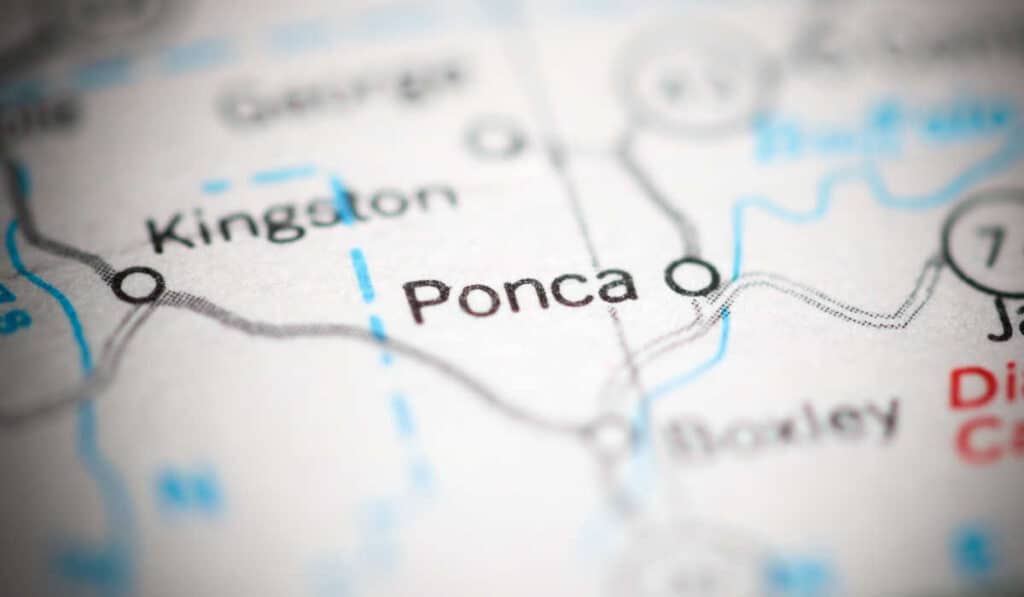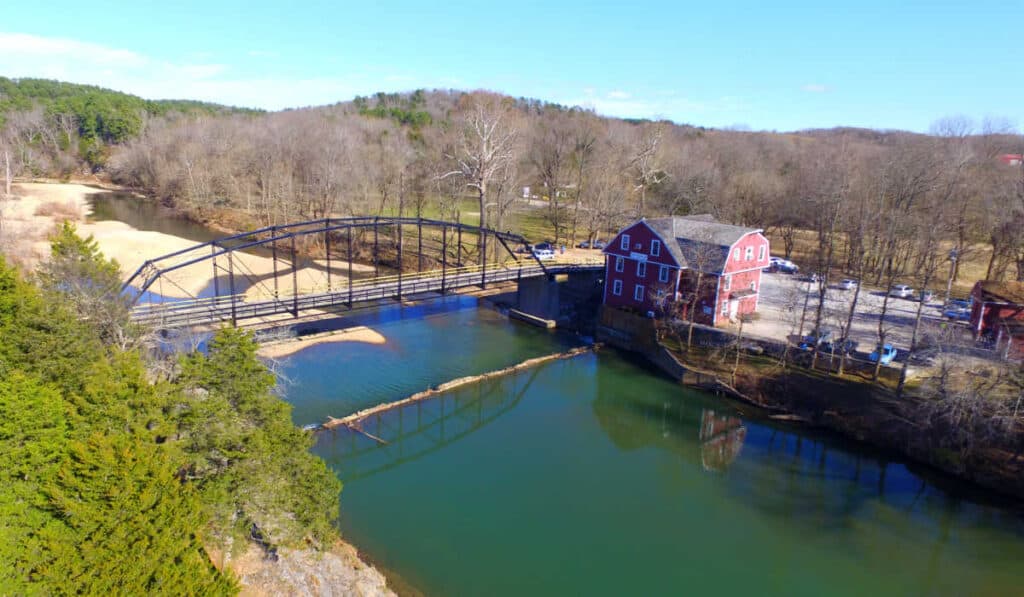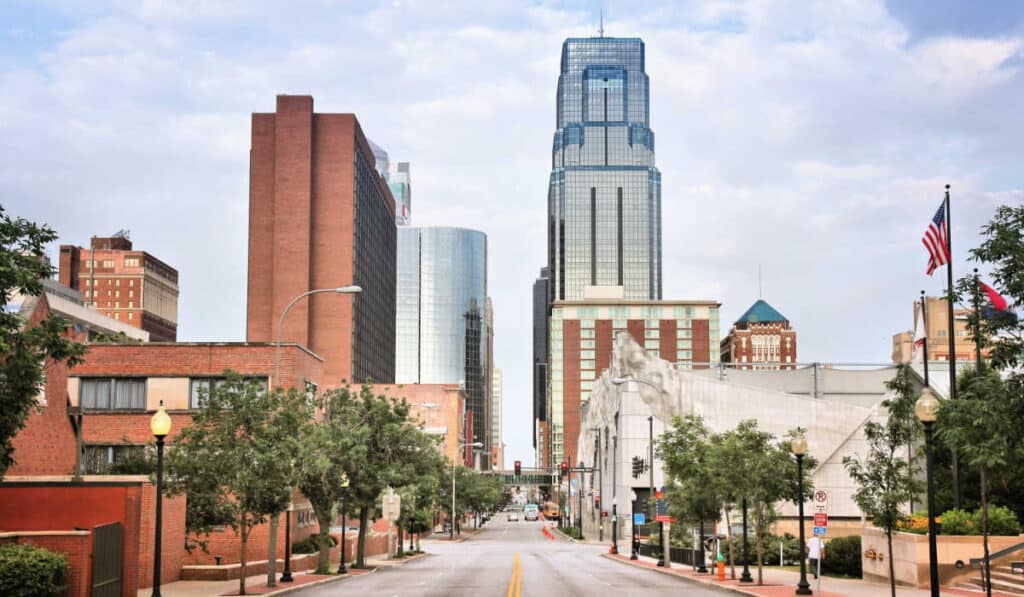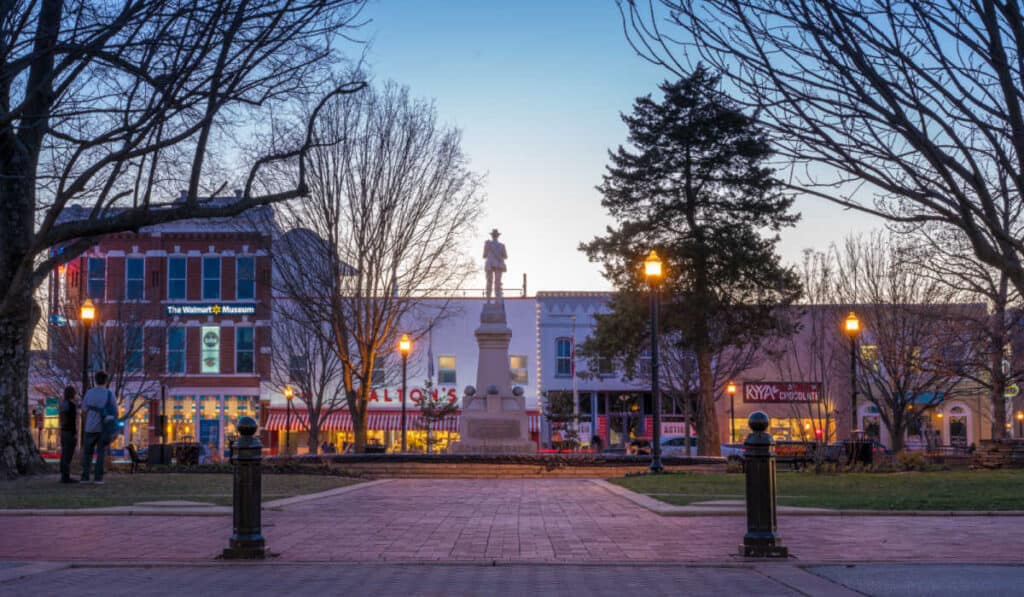The Ozarks region holds a significant place in the history of the Underground Railroad. This vast area, covering parts of Missouri, Arkansas, Oklahoma, and Kansas, provided a haven for freedom seekers as they journeyed to escape slavery. The picturesque landscape of wooded hills and valleys served as the backdrop for numerous stories of courage and resilience.
I’m excited to share a glimpse into the history of these Underground Railroad sites in the Ozarks. Many of these locations have been carefully preserved and offer educational opportunities to learn about the struggles faced by those seeking freedom. By understanding the role of these sites and the people involved, we gain a deeper appreciation for the bravery and determination displayed by those who dared to defy the system of slavery.
As we delve into the topic of Ozarks Underground Railroad sites, we will uncover the stories that shaped this important chapter in American history. From safe houses to the courageous individuals involved, the Ozarks played a vital role as a pathway to freedom for many during one of our nation’s darkest times.
Historical Overview
As I began my research into the Ozarks’ connection to the Underground Railroad, I realized the importance of this aspect of American history. The Underground Railroad was an intricate network of routes and safe houses that helped enslaved African Americans escape bondage and find freedom in the 19th century. This effort often started with the brave actions of the enslaved themselves, taking the first step towards self-emancipation.
As the United States moved closer to the Civil War, the Underground Railroad’s role became increasingly significant. Maryland and Ohio were two key states involved in this network as they provided pivotal routes for freedom seekers. Abolitionists in these states risked their lives to aid those fleeing slavery, and they fought against oppressive laws like the Fugitive Slave Act. Famous abolitionist John Brown played a critical role in the movement, while Maryland was central to the story of Harriet Tubman, one of the Underground Railroad’s most influential conductors.
In the years leading up to the Civil War, tensions between pro-slavery and abolitionist sentiments culminated in events like “Bleeding Kansas,” illustrating the violent struggle over the institution of slavery. People who believed in the abolitionist cause, like Frederick Douglass, worked towards ending slavery. The Frederick Douglass National Historic Site now stands as a testament to his legacy and the importance of the fight for freedom.
During Black History Month, it’s essential to remember the role that the Underground Railroad played in the larger narrative of American history. Enslaved African Americans seeking freedom followed the North Star and relied on the help of abolitionists to make their way to states where they could live as free individuals. Notable figures like Frederick Douglass and Harriet Tubman emerged as iconic leaders who worked tirelessly towards the goal of abolishing slavery.
In the context of the Ozarks, the region may not have been directly linked to the primary routes of the Underground Railroad; however, the ideals of helping enslaved African Americans escape and establish new lives in safe environments resonate deeply with the values held by people across America at the time. Like the Ozarks, many other rural areas may have provided critical support and resources to the effort. This piece of history serves as a powerful reminder that compassion and heroism are not confined to specific geographic locations or communities but extend across the fabric of our nation.
Network to Freedom
As a history enthusiast, I have learned that the National Park Service manages the Network to Freedom program, which recognizes locations across the United States with a verifiable connection to the Underground Railroad. This program promotes the preservation and understanding of these significant sites, while telling the stories of those who risked their lives in the pursuit of freedom.
In my research, I discovered that there are over 700 Network to Freedom locations in 39 states, as well as Washington D.C. and the U.S. Virgin Islands. These sites provide an opportunity to delve into the stories of individuals who sought freedom from slavery, as well as those who assisted them in their journeys. Among these locations, I found out that Kansas is home to 21 Underground Railroad Network to Freedom sites.
The Underground Railroad played a vital role in the journey to freedom for many enslaved people in the United States. By following this secret network of routes and safe houses, thousands of freedom seekers were able to make their way from the south to the north, and ultimately to the safety of Canada. The National Park Service, along with the members of the Network to Freedom, aims to demonstrate the significance of the Underground Railroad in the eradication of slavery as a cornerstone of the national civil rights movement.
Through these Network to Freedom sites, I was able to better understand the struggles and triumphs of those who sought freedom. These locations, each with their own unique history, offer visitors a chance to learn about the experiences of enslaved people and the brave individuals who helped them along their perilous journey.
Ozarks Region
As I explored the Ozarks region, I discovered a rich history tied to the Underground Railroad. The Ozarks, also known as the Ozark Mountains, Ozark Highlands, or Ozark Plateau, spans across the U.S. states of Missouri, Arkansas, Oklahoma, and the extreme southeastern corner of Kansas.
When discussing the history of the Underground Railroad, mention of the Ozarks is not uncommon. Although not widely known, the Ozarks region played a pivotal role in the journey of many escaped slaves seeking freedom.
In the states within the Ozarks region, Missouri and Illinois, there are numerous historic sites that were part of the Underground Railroad. The trails used by the fugitive slaves often passed through various safe houses and abolitionist strongholds in these states. One such example located in Illinois is the Owen Lovejoy House, a notable stop on the Underground Railroad.
Missouri also played its part and was a major transit point for enslaved Africans seeking refuge. The anti-slavery sentiment was strong in certain communities, contributing to the establishment and sustenance of Underground Railroad routes throughout the state.
My exploration of the Ozarks region opened my eyes to the critical role this area played in history. While not typically highlighted in many accounts of the Underground Railroad, the Ozarks hold a deeply significant and inspiring story.
Key Figures and Abolitionists
I would like to highlight some key figures and abolitionists who played significant roles in the Underground Railroad, especially in the Ozarks region. Among them are Harriet Tubman, Frederick Douglass, John Brown, and Levi Coffin. These individuals showed immense courage and dedication in their fight for the freedom of enslaved people.
Harriet Tubman was an extraordinary figure who led hundreds of enslaved individuals to freedom via the Underground Railroad. As an escaped slave herself, she risked her own life numerous times to guide others through dangerous territory. Tubman’s famous line, “I freed a thousand slaves; I could have freed a thousand more if only they knew they were slaves,” embodies her determination and perseverance.
The Frederick Douglass National Historic Site honors the life of this renowned abolitionist who was also an escaped slave. Through his powerful speeches, writings, and personal testimony, he inspired many people to fight against slavery. Douglass went on to become a leader for the abolishment of slavery and to advocate for equal rights for African Americans.
Another key figure in the Underground Railroad was John Brown, a passionate abolitionist who believed that violent means were necessary to abolish slavery. His fervor ultimately led to the raid on Harper’s Ferry in 1859, where he hoped to seize weapons and start a large-scale rebellion among enslaved people. Although Brown’s plans did not succeed, his actions fueled the growing debate over slavery leading up to the Civil War.
Levi Coffin was a Quaker abolitionist who played a crucial role in the functioning of the Underground Railroad. Known as “President of the Underground Railroad,” he and his wife provided a safe haven for escaping slaves and assisted over 3,000 individuals in their journey to freedom. Coffin’s dedication to the cause significantly impacted the success of the Underground Railroad during that time.
In conclusion, these key figures and abolitionists demonstrated immense courage and dedication as they fought tirelessly for the freedom of enslaved individuals. Their actions and commitment significantly influenced the abolitionist movement and the eventual end of slavery in the United States.
Prominent Locations
I recently learned about some fascinating locations related to the Underground Railroad in the Ozarks. As we know, the Underground Railroad was a network of secret routes and safe houses used by African American slaves to escape to freedom. Let me share with you some information about the sites I discovered across various states.
In Maryland, I found that the Harriet Tubman Underground Railroad National Historical Park holds a significant part of American history. This park stands as a tribute to Harriet Tubman’s heroic efforts in helping numerous slaves escape to freedom.
Ohio is home to the National Underground Railroad Freedom Center, a museum filled with exhibits and artifacts that showcase the struggles of freedom seekers and the courage of those who helped them. It’s a must-see destination for anyone interested in learning more about this pivotal time in American history.
As we venture further west, I discovered the important role that Kansas played in the fight for freedom. The state has several Underground Railroad sites, including safe houses and locations where the freedom seekers received support.
In Indiana, I found another essential stop on the path to freedom. Fountain City is home to the Levi and Catharine Coffin State Historic Site, which served as the “Grand Central Station” of the Underground Railroad, helping more than 2,000 slaves secure their freedom.
The Harriet Tubman Home in Auburn, New York, provides a glimpse into the life of the most famous conductor of the Underground Railroad. After her many brave acts of leading people to freedom, she spent her remaining years at this residence.
While the Ozarks region spans across multiple states, there are still other notable locations in the broader area worth mentioning. North Carolina houses the Charlotte Hawkins Brown Museum, which educates visitors about the impact of the Underground Railroad and the education of African Americans in the area.
Detroit, Michigan, played a significant role as a crossing point into Canada for many freedom seekers. In this city, you’ll find the First Congregational Church of Detroit, which has strong ties to the Underground Railroad and was a shelter for numerous slaves on their journey to freedom.
Colorado’s Barney L. Ford Building reveals another angle of the Underground Railroad history, showcasing the life and achievements of Ford, an escaped slave who became a successful businessman and civil rights leader.
In Connecticut, the James and Sophia Clemens Farmstead served as an essential stop along the Underground Railroad. As active abolitionists, James and Sophia Clemens provided shelter and assistance to many escaping slaves.
The Bethel AME Church in Richmond, Indiana, was another crucial location that offered sanctuary and support to those seeking freedom. This church was part of a larger network that helped countless African Americans on their path to a better life.
Lastly, St. Catharines in Ontario, Canada, was a vital end destination for many on the Underground Railroad. The Salem Chapel BME Church is a historic landmark that recognizes the thriving community that formed there at the time.
As you can see, there are many prominent locations connected to the Underground Railroad across multiple states and even stretching into Canada. Each of these places holds a unique story and reveals the courage, resilience, and determination of those who fought for freedom.
Historical Structures
As I explore the fascinating history of the Underground Railroad, I have come across several historically significant structures that played a crucial role during this time. One such example is the Barney L. Ford Building in Denver, Colorado. This building, now listed on the National Register of Historic Places, was instrumental in providing sanctuary and support to those seeking freedom.
In Connecticut, the homes of James and Sophia Clemens were also safe havens along the Underground Railroad. James and Sophia were active abolitionists who offered their homes as part of the network. Their courageous actions contributed immensely to the success of the Underground Railroad, helping countless freedom seekers in their quest for a better life.
Another significant location is the historic Bethel AME Church, which was not only a place of worship but also provided critical support to those on the run. The church’s members and leaders displayed tremendous bravery by offering assistance, shelter, and guidance to individuals escaping enslavement.
As I continue to research these historical structures, I am constantly reminded of the importance of preserving sites that have played such a vital role in America’s history. The Underground Railroad brought together ordinary people who shared the common goal of helping others on their arduous journey to freedom. By acknowledging these historical structures, we can better understand and appreciate the stories of the past and their impact on our collective present.
Race and Slavery
As part of my research into the Ozarks’ Underground Railroad sites, I delved into the intertwined aspects of race and slavery. Throughout the 19th century, race played a significant role in shaping the experiences of both enslaved African Americans and those who sought to help them escape the bonds of bondage.
Enslaved African Americans in the United States had to navigate a society that devalued and oppressed them. They lived under constant fear and uncertainty, knowing their lives were at the mercy of their white enslavers. Despite these challenges, many of them took the brave step to escape their captivity, risking their lives for the hope of freedom.
In the Ozarks region, there were individuals and communities that aided these slaves in their quest for freedom. These abolitionists, both black and white, played a crucial role in providing sanctuary, support, and transportation to help enslaved African Americans reach safety. Many of these individuals risked their own lives and livelihoods to assist those in bondage, driven by a conviction that all people should be free.
Within the context of the Underground Railroad, race intersected with the broader struggle against slavery. Although there were individuals who fought passionately for abolition, the society in which they lived was still divided along racial lines. It’s important to remember that the fight against slavery was not just about liberating those in bondage, but also about challenging the racial prejudice and discrimination that made slavery possible in the first place.
Researching the Ozarks’ Underground Railroad sites has deepened my understanding of the immense courage and determination of both the enslaved African Americans and their allies in their pursuit of freedom. This history serves as a reminder that the fight against systemic racism and injustice is ongoing, and we must continue to strive for a more equitable and inclusive society.
Women’s Role in the Underground Railroad
I have gathered information about the significant contributions of women in the Underground Railroad. These brave women took various roles, such as organizers, abolitionists, and conductors, to help enslaved people escape to freedom.
Being an abolitionist meant fighting against slavery and advocating for its abolition. Many women who played significant roles in the Underground Railroad were self-identified abolitionists. They used their connections to prominent abolitionist leaders through marriages or anti-slavery societies in order to support the cause.
One of the most well-known conductors was Harriet Tubman, an escaped enslaved woman who made over a dozen trips into slaveholding states, leading people to freedom. She accomplished all this while carrying a bounty on her head, showcasing her courage and determination.
Women were not just involved in the actual activities of the Underground Railroad but also played significant roles in advocating for the cause and spreading awareness. They often took part in resistance movements against slavery, thereby displaying their commitment to the cause.
In conclusion, the role of women in the Underground Railroad cannot be understated. Their involvement in various capacities, like organizers, abolitionists, and conductors, contributed significantly to the success of the movement. Their brave and tireless efforts to fight against slavery, bring about its abolition, and help enslaved individuals escape to freedom deserve recognition and appreciation.
Education and Advocacy
I believe that education is crucial in raising awareness about the Underground Railroad sites in the Ozarks region. By publishing accurate and engaging information about these sites, we can help preserve their historical significance and encourage public interest in visiting and supporting them. Additionally, designating some of these locations as national monuments could further elevate their status and draw attention to their importance in American history.
To achieve this, I think it is essential to collaborate with local educational institutions and historical societies to develop educational materials and programs about the Ozarks Underground Railroad sites. These resources could be made available for students, teachers, and the general public, enabling them to learn more about these significant landmarks and their role in the fight against slavery.
I also see the value in seeking funding options for these educational initiatives. Grants from federal and state agencies, as well as private organizations and individuals interested in preserving history, could be instrumental in ensuring the long-term success of these programs. This financial support could help create engaging educational materials, organize events like exhibits and seminars, and even maintain or restore some of the physical sites themselves.
Moreover, forging partnerships with national advocacy organizations and academic researchers can provide additional resources and expertise to further the understanding and promotion of the Ozarks Underground Railroad sites. These collaborations could lead to more exposure, support, and educational opportunities for those who wish to learn and contribute to the preservation of these important historical landmarks.
In conclusion, I am confident that by focusing on education and advocacy, we can ensure the Ozarks Underground Railroad sites receive the attention and support they deserve, ultimately preserving an essential piece of our nation’s history for future generations to learn from and cherish.
Miscellaneous Facts
The Ozarks region has a rich history of involvement in the Underground Railroad. As a part of the covert network of routes, safehouses, and resources used by enslaved African Americans to gain their freedom, several sites in this area played a crucial role in providing support and transport. During my research, I discovered some interesting miscellaneous facts about the underground railroad sites in the Ozarks.
I learned that cities and towns in this region established their own private networks, connecting with fellow anti-slavery sympathizers and free Blacks across the country. For example, the city of Lawrence, located in the northeastern part of the Ozarks, was known for its strong abolitionist stance and offered critical safehouses and transport to those seeking freedom.
In addition to locations in the Ozarks like Lawrence, the Underground Railroad extended far beyond this region, stretching through several states and even reaching locations like Denver and Ausable Chasm. By uniting people from all walks of life, the Underground Railroad created a powerful and successful movement to support the emancipation of thousands of African Americans.
Another interesting aspect of the Underground Railroad is its ability to leave a strong and lasting impact on the regions it touched. Today, many sites offer tours and educational programs highlighting their involvement in this history. In fact, the National Park Service has even established a Network to Freedom, which recognizes and preserves these important locations.
On a related note, I found it fascinating that the Underground Railroad even has a connection with something as seemingly unrelated as stamps. The U.S. Postal Service issued a series of commemorative stamps to honor the courageous decision made by thousands of African Americans to seek their freedom and the supportive network that made it all possible.
In conclusion, the Ozarks’ participation in the Underground Railroad demonstrates the region’s commitment to the abolitionist cause and its dedication to creating a more inclusive and just society.

